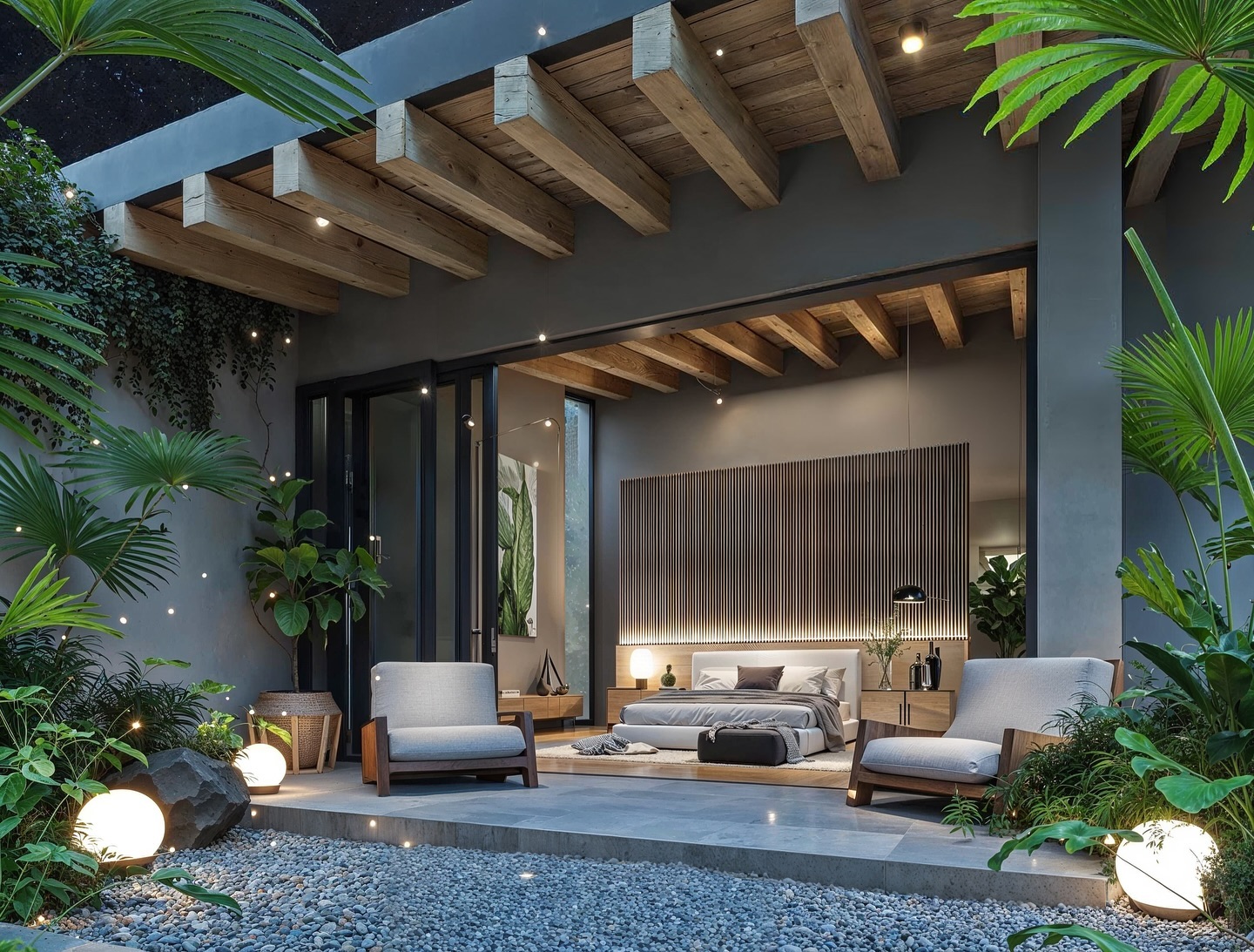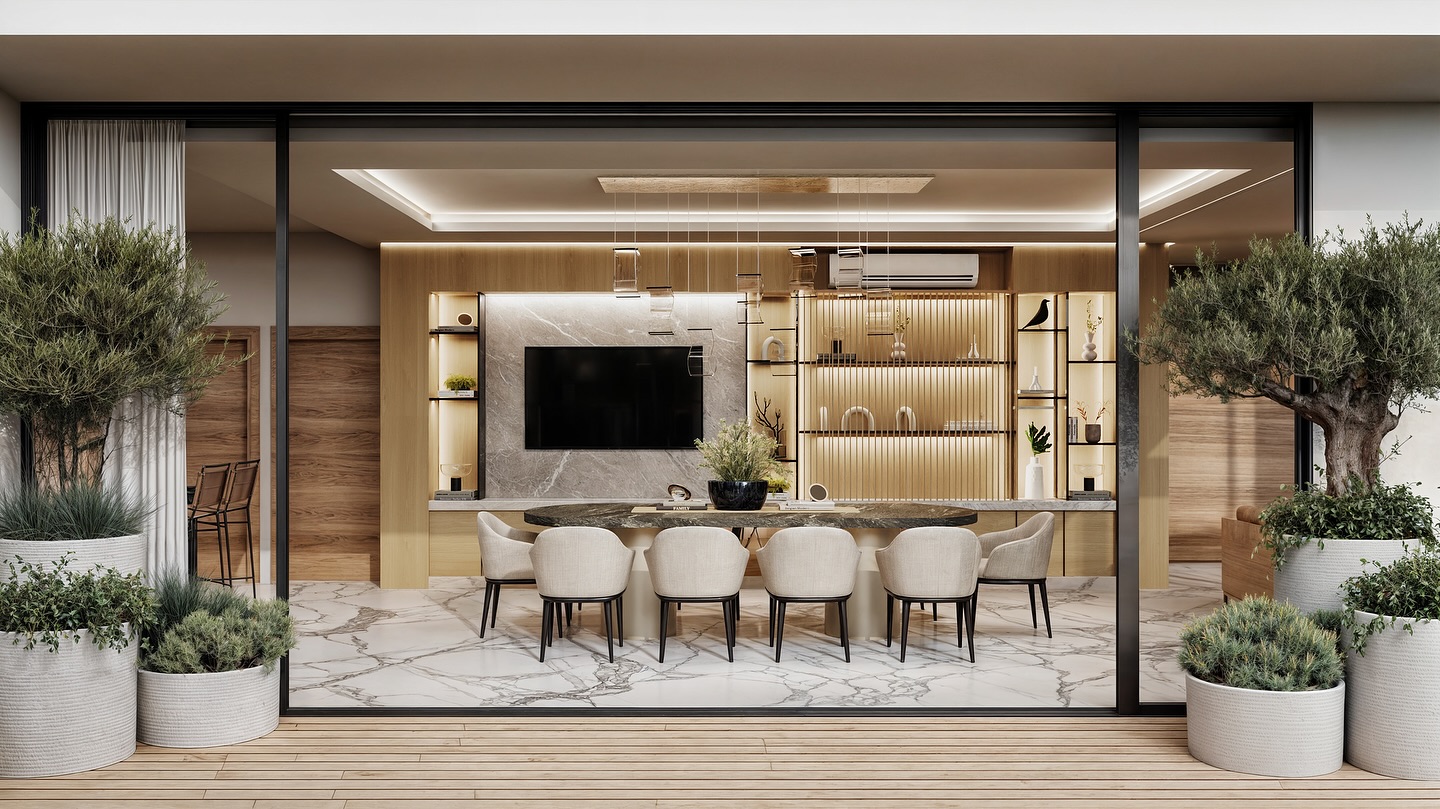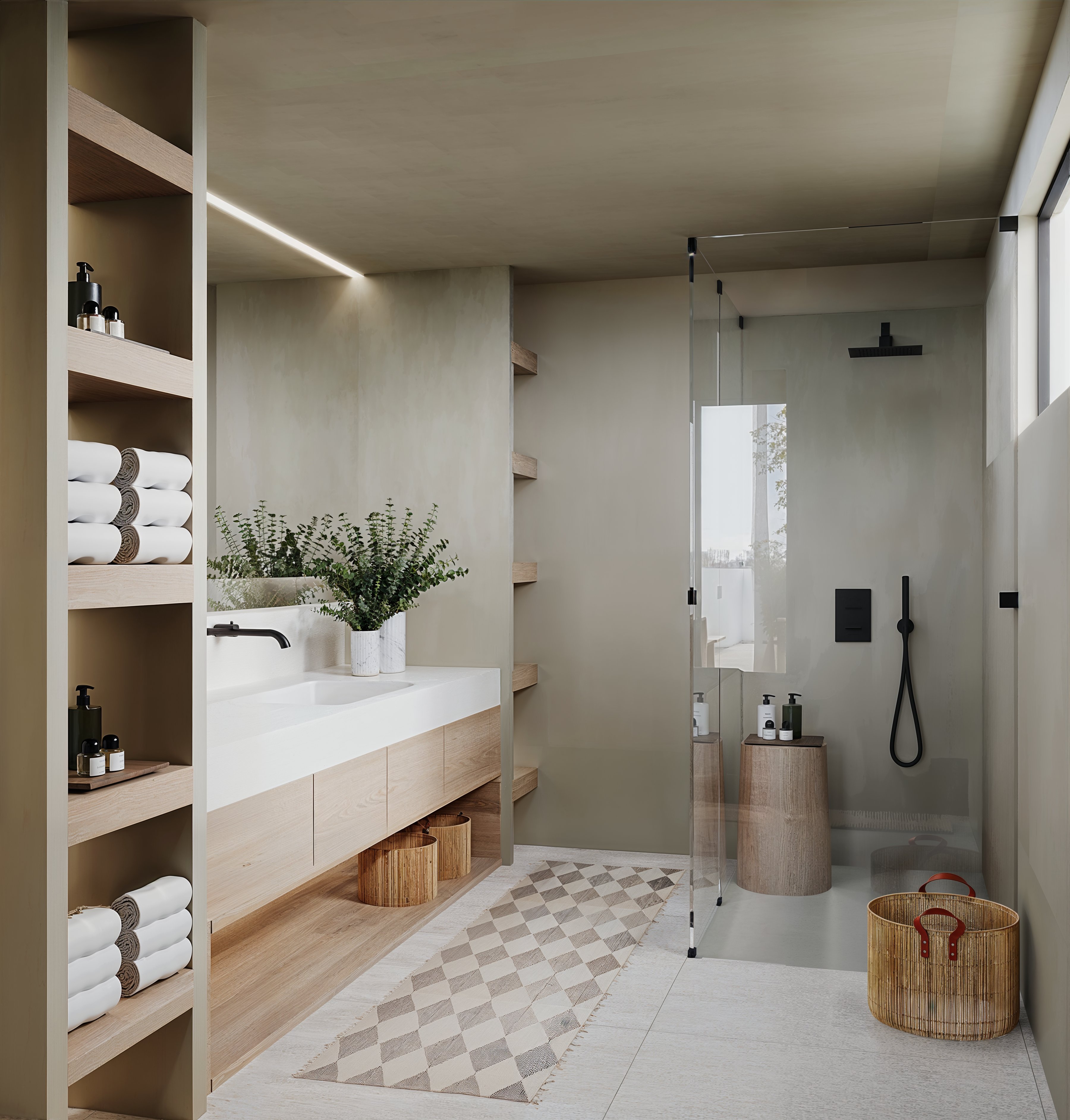Photorealism with AI: Enhancing 3D Renders Using Neural Networks

Achieving photorealism in 3D rendering used to mean hours of manual work, complex configurations, and powerful machines. Today, artificial intelligence (AI) is redefining that process—enhancing quality and reducing production time through neural network-powered tools.
At Ambar Estudio, we integrate cutting-edge AI tools into our 3D rendering services to deliver high-impact visualizations that look real—and are produced more efficiently than ever before.
1. What Is Photorealism in 3D Rendering?
Photorealism refers to when a computer-generated image is nearly indistinguishable from a photograph. To achieve it, a render must accurately simulate:
* Global lighting and soft shadows
* Physically-correct materials (reflectivity, roughness, translucency)
* Fine visual details like surface imperfections and ambient occlusion
Traditionally, this level of realism required extensive manual tuning and high render times. AI now simplifies and accelerates that journey.
2. AI Upscaling and Sharpening with Neural Networks
Tools like NVIDIA DLSS (Deep Learning Super Sampling) allow renders to be processed at a lower resolution, then upscaled using deep learning—producing high-fidelity images with lower computational cost.
* Perfect for animations, walkthroughs, or real-time presentations.
* Saves hours of rendering without sacrificing image sharpness.
Other tools like Topaz Gigapixel AI can also upscale final render outputs for ultra-detailed presentation imagery.
3. Intelligent Denoising with AI
Every renderer deals with noise—visual artifacts caused by low sample counts. While older workflows required increasing render times or manual noise reduction, today’s AI-driven denoisers provide better, faster results:
* Render engines like V-Ray, Arnold, Octane, and Blender include AI denoising trained on vast datasets.
* The result: clean, polished images without needing hours of extra sampling.
We use these tools as part of our standard workflow at Ambar Estudio to maintain quality while optimizing efficiency.
4. Lighting and Post-Processing Optimization
AI can also optimize lighting setups and post-production workflows:
* Auto-lighting: Algorithms suggest the best lighting angles or times of day based on the design context.
* Smart color grading: AI can apply cinematic tones and moods consistently across images.
* Style transfer: Apply stylized effects (e.g., watercolor, sketch, film look) for concept presentations or artistic renderings.
These capabilities are particularly useful for client proposals, marketing visuals, or rapid prototyping.
5. What This Means for Architects and Developers
Thanks to AI, designers can now achieve more with less. The benefits include:
* More impactful visuals without expensive hardware.
* Faster client revisions and approvals.
* Consistent quality with less manual intervention.
At Ambar Estudio, we blend AI-driven optimization with our creative and technical expertise to deliver stunning architectural visualizations that elevate your designs and presentations.
Conclusion: Smart Photorealism Is the Future
Neural networks aren’t replacing 3D artists—they’re empowering them. With AI-enhanced workflows, achieving photorealism is now faster, smarter, and more accessible than ever.
Want your next render to feel as real as a photograph? Contact us at Ambar Estudio and let’s create visual experiences that stand out using the best of creativity and intelligent tech.
Written by Rafael Arredondo
Ambar Estudio Team
Related Articles


